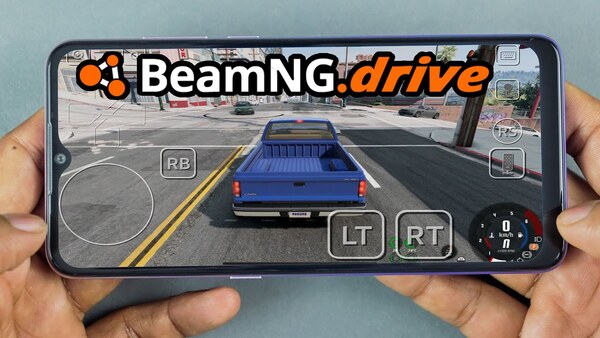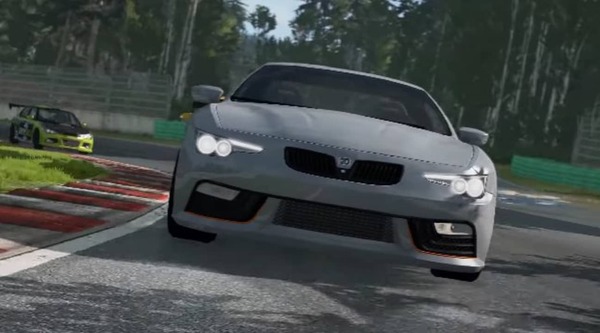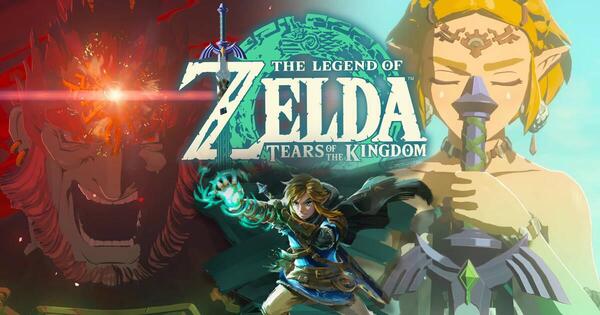
BeamNG.drive is renowned for its highly realistic driving simulation and advanced soft-body physics, allowing players to experience vehicle dynamics in ways that few other games can match. However, one of the most significant issues that players encounter is the complexity of managing realistic vehicle damage. This problem isn’t just about how damage looks but also how it affects gameplay, vehicle performance, and the overall simulation experience. This article will dive deeply into the challenges of realistic vehicle damage in BeamNG.drive, exploring the intricacies from various angles.
The Origins of BeamNG.drive’s Damage System
BeamNG.drive’s damage system is a result of years of development and refinement. The game employs soft-body physics to simulate the way vehicles deform and break under stress, which is a stark contrast to traditional rigid-body physics used in most driving games.
Early Development Hurdles
During the initial stages of development, one of the primary challenges was creating a system that could accurately replicate the physical behavior of real vehicles. Traditional methods were inadequate, as they often resulted in unrealistic and overly simplistic damage models. The developers had to engineer a new physics system from the ground up, which required intensive research into materials science and engineering principles.
Evolution of the Damage Model
As the game evolved, so did its damage model. The developers continuously refined the soft-body physics to create more realistic and dynamic damage outcomes. This evolution was driven by community feedback and the need to address specific issues such as performance optimization and the accuracy of damage representation across different vehicle types.
Realism vs. Playability: A Delicate Balance
One of the most significant challenges in simulating realistic vehicle damage is balancing realism with playability. While players appreciate the game’s realistic approach, there are times when too much realism can hinder the gaming experience.
The Impact on Vehicle Control
Realistic damage affects vehicle control in BeamNG.drive, sometimes making vehicles undrivable after a crash. This can be frustrating for players who want to continue exploring or completing challenges. The developers have had to strike a balance between making damage realistic and ensuring that the game remains enjoyable.
Adjustments and Compromises
To address this, BeamNG.drive includes various settings that allow players to tweak the level of damage realism. For example, players can choose to enable or disable certain types of damage or adjust how sensitive vehicles are to impacts. These options help to cater to a wide range of players, from those seeking an ultra-realistic experience to those who prefer a more forgiving game.
The Physics Behind Soft-Body Simulation
Understanding the physics behind BeamNG.drive’s damage system requires a deep dive into soft-body simulation. Unlike rigid-body physics, which assumes that objects do not deform, soft-body physics takes into account the flexibility and deformation of materials under stress.
The Role of Node-Beam Structure
The core of BeamNG.drive’s soft-body physics is the node-beam structure. Each vehicle is composed of numerous interconnected nodes (points) and beams (connections between nodes). When a vehicle crashes, these nodes and beams simulate the forces and resulting deformations, leading to highly realistic damage.
Challenges in Accuracy
One of the ongoing challenges with this system is ensuring that the damage is not only visually accurate but also physically accurate. This requires precise calculations and often involves trade-offs between computational power and the level of detail. Developers continually work on optimizing these calculations to improve both the realism and performance of the game.
Performance Optimization and Hardware Demands
The realistic damage in BeamNG.drive comes at a cost: it is incredibly demanding on hardware. Simulating soft-body physics in real-time requires significant processing power, which can be a barrier for players with lower-end systems.
The Strain on CPUs and GPUs
Soft-body physics is particularly taxing on both CPUs and GPUs. Unlike traditional games that rely heavily on graphical processing, BeamNG.drive requires substantial computational power to simulate the physics accurately. This often results in lower frame rates and longer load times, especially when multiple vehicles are involved.
Optimization Techniques
To mitigate these issues, the developers have implemented various optimization techniques. For example, they have refined the physics engine to run more efficiently on multi-core processors and have introduced options to lower the level of detail in the simulation. These optimizations help to make the game more accessible to a broader audience without sacrificing too much realism.
The Impact of Vehicle Type and Design on Damage
Not all vehicles in BeamNG.drive are created equal, and this is particularly evident in how different vehicles respond to damage. The design, size, and material composition of a vehicle all play significant roles in determining how it will deform and handle crashes.
The Role of Weight and Material
Heavier vehicles tend to sustain damage differently than lighter ones. For example, a large truck might crumple less than a small car in a collision, but the damage to its structural integrity could be more severe. Additionally, the materials used in a vehicle’s construction, such as metal versus fiberglass, affect how it absorbs impacts.
Vehicle-Specific Damage Models
To account for these differences, BeamNG.drive includes vehicle-specific damage models. Each vehicle has its own set of parameters that influence how it behaves under stress, leading to a wide variety of damage outcomes. This adds another layer of realism to the game but also presents additional challenges in terms of balancing and optimization.
Modding Community’s Role in Enhancing Damage Realism
BeamNG.drive has a vibrant modding community that plays a crucial role in enhancing the game’s damage realism. Modders often create custom vehicles, scenarios, and even physics tweaks that push the boundaries of what the game can do.
Community-Driven Innovations
Modders have introduced several innovations that have been incorporated into the game’s official updates. For example, some mods enhance the accuracy of damage models or introduce new types of damage effects that weren’t originally in the game. This collaborative relationship between the developers and the community has been instrumental in driving the game’s evolution.
The Challenges of Mod Compatibility
However, with these innovations come challenges. Ensuring that mods are compatible with the base game and with each other can be difficult, especially when new updates are released. The developers often work closely with modders to address these issues, but it remains an ongoing challenge.
The Psychological Impact of Realistic Damage
While the technical aspects of realistic vehicle damage are fascinating, it’s also worth considering the psychological impact it has on players. The realism in BeamNG.drive can evoke strong emotional responses, making the game more engaging but also more intense.
Immersion and Emotional Investment
The realistic damage in BeamNG.drive contributes significantly to player immersion. When a vehicle crashes and deforms in a lifelike manner, it can create a strong emotional connection to the game. Players often feel a sense of loss when a vehicle they’ve been carefully driving is destroyed, which adds to the overall intensity of the experience.
The Role of Realism in Gameplay Satisfaction
For some players, this realism enhances the satisfaction of gameplay, as it makes each success more meaningful. However, for others, the intensity of the damage simulation can be overwhelming, leading to frustration. The developers have had to consider these psychological factors when designing the game and continue to refine the balance between realism and enjoyment.
The Future of Damage Simulation in BeamNG.drive
As BeamNG.drive continues to evolve, so too does its damage simulation. The developers have ambitious plans to push the boundaries of what’s possible in vehicle physics, with a focus on improving realism without compromising performance.
Planned Enhancements
Future updates are expected to include even more detailed damage models, improved physics calculations, and better optimization techniques. The goal is to create a simulation that is as close to reality as possible while still being accessible to a wide audience.
The Role of Emerging Technologies
Emerging technologies, such as real-time ray tracing and AI-driven physics simulations, may also play a role in the future of BeamNG.drive. These technologies could enable even more realistic damage models and more efficient processing, further enhancing the game’s appeal.
Common Issues with Current Damage Simulation
Despite its achievements, BeamNG.drive’s damage system is not without its flaws. Players often encounter issues that can detract from the experience, ranging from minor bugs to more significant problems that impact gameplay.
Known Bugs and Glitches
One common issue is the occurrence of bugs and glitches related to the damage system. For example, vehicles may sometimes exhibit unrealistic behavior after a crash, such as clipping through objects or deforming in unnatural ways. These issues are typically addressed in updates, but they can be frustrating for players when they occur.
The Challenge of Consistency
Another challenge is maintaining consistency in damage simulation across different vehicles and scenarios. The complex nature of the soft-body physics means that minor differences in vehicle design or environmental conditions can lead to vastly different damage outcomes. This inconsistency can make it difficult for players to predict how their vehicles will behave in certain situations.
Conclusion: The Ongoing Journey of Realistic Damage in BeamNG.drive
The quest for realistic vehicle damage in BeamNG.drive is an ongoing journey that reflects the broader challenges of simulating real-world physics in a digital environment. While the game has made significant strides in creating a damage model that is both visually and physically accurate, it continues to face challenges related to performance, realism, and player satisfaction.
Summary
In conclusion, BeamNG.drive’s realistic vehicle damage system is both a technical marvel and a source of ongoing challenges. As the game continues to evolve, the developers and community will undoubtedly keep pushing the boundaries of what’s possible, striving to create an even more immersive and realistic driving experience.











